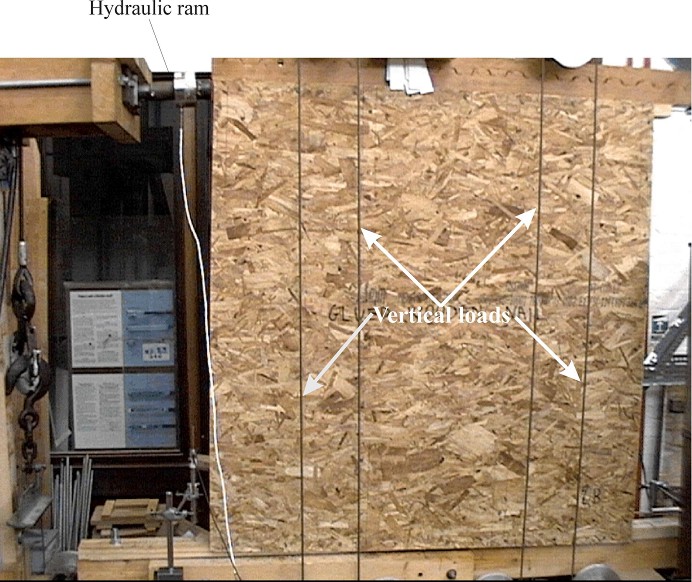
engineering & technology publications
ISSN 1759-3433
PROCEEDINGS OF THE TENTH INTERNATIONAL CONFERENCE ON CIVIL, STRUCTURAL AND ENVIRONMENTAL ENGINEERING COMPUTING
Modelling of Timber Framed Shear Walls using Wooden Dowels
School of the Environment, University of Brighton, United Kingdom
Non-metallic nails can be made with hard wood, bamboo or plastics. There is a long history for human beings to use wooden and bamboo nails/dowels in furniture and traditional buildings. A modern exhibition centre has been built using bamboo dowels in Japan [3]. Therefore, it has been proved that such non-metallic nails/dowels have a potential for modern structural uses. However, when introducing wooden nails to connect sheathing panels to studs to form a shear wall, its racking resistance needs to be tested to assess its structural performance.
Regarding to wooden nail/dowel, there are quite a few hardwood species that may be suitable for the shear wall. The final goal will be that the wooden nail can be fired through the sheathing to penetrate the stud using a nail gun. However, to keep it simple, a wooden dowel made with walnut was adopted in the preliminary study to investigate the structural performance of such the shear wall in terms of racking resistance in comparison with the shear wall made with steel nails. Figure 196.1 shows a shear wall made with wooden dowels to be tested.
In this paper, timber framed shear walls made with wooden dowels and steel nails were tested to obtain comparable structural behaviour in terms of racking resistance and failure modes. Vertical loadings were applied to take the self-weight of a house and contents into account. Three LVDTs were used to record key deformations of the shear wall under both the racking force and the vertical load. Material tests that cover the shear strength and compressive strength of the wood dowel were also carried out. Using two conventional methods, various parameters, such as elastic stiffness, yield strength, ductility, were calculated for walls made with wooden dowels and steel nails. Comparison of racking resistance between these two types of shear walls was also given. Three dimensional finite element models were then developed to simulate racking resistance of shear walls made with wooden dowels. Correlation between the test results and the simulations is reasonable.
- 1
- Timber Frame Construction. TRADA, High Wycombe, Bucks. 1994.
- 2
- Environmental Standard: Homes for a greener world. BRE, Watford. 1995.
- 3
- Presentation given by Prof. M. Inoue from Oita University (Japan) in a joint research meeting in Brighton, September, 2004.
purchase the full-text of this paper (price £20)
go to the previous paper
go to the next paper
return to the table of contents
return to the book description
purchase this book (price £135 +P&P)
